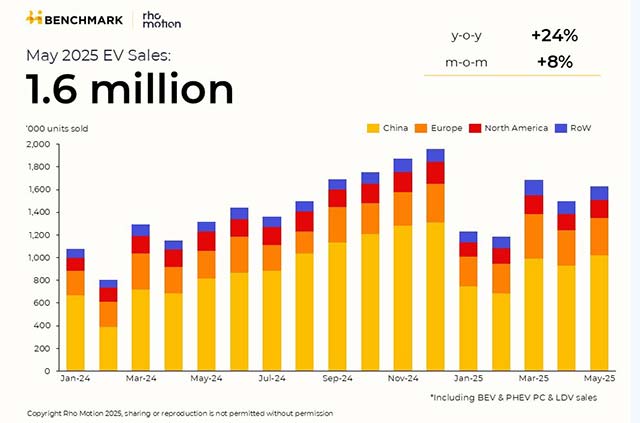How Did the AI “Claude” Get Its Name?
By MIKE MAGEE Let me be the first to introduce you to Claude Elwood Shannon. If you have never heard of him but consider yourself informed and engaged, including at the interface ofContinue reading...


By MIKE MAGEE
Let me be the first to introduce you to Claude Elwood Shannon. If you have never heard of him but consider yourself informed and engaged, including at the interface of AI and Medicine, don’t be embarrassed. I taught a semester of “AI and Medicine” in 2024 and only recently was introduced to “Claude.”
Let’s begin with the fact that the product, Claude, is not the same as the person, Claude. The person died a quarter century ago and except for those deep in the field of AI has largely been forgotten – until now.
Among those in the know, Claude Elwood Shannon is often referred to as the “father of information theory.” He graduated from the University of Michigan in 1936 where he majored in electrical engineering and mathematics. At 21, as a Master’s student at MIT, he wrote a Master’s Thesis titled “A Symbolic Analysis Relay and Switching Circuits” which those in the know claim was “the birth certificate of the digital revolution,” earning him the Alfred Noble Prize in 1939 (No, not that Nobel Prize).
None of this was particularly obvious in those early years. A University of Michigan biopic claims, “If you were looking for world changers in the U-M class of 1936, you probably would not have singled out Claude Shannon. The shy, stick-thin young man from Gaylord, Michigan, had a studious air and, at times, a playful smirk—but none of the obvious aspects of greatness. In the Michiganensian yearbook, Shannon is one more face in the crowd, his tie tightly knotted and his hair neatly parted for his senior photo.”
But that was one of the historic misreads of all time, according to his alma mater. “That unassuming senior would go on to take his place among the most influential Michigan alumni of all time—and among the towering scientific geniuses of the 20th century…It was Shannon who created the “bit,” the first objective measurement of the information content of any message—but that statement minimizes his contributions. It would be more accurate to say that Claude Shannon invented the modern concept of information. Scientific American called his groundbreaking 1948 paper, “A Mathematical Theory of Communication,” the “Magna Carta of the Information Age.”
I was introduced to “Claude” just 5 days ago by Washington Post Technology Columnist, Geoffrey Fowler – Claude the product, not the person. His article, titled “5 AI bots took our tough reading test. One was smartest — and it wasn’t ChatGPT,” caught my eye. As he explained, “We challenged AI helpers to decode legal contracts, simplify medical research, speed-read a novel and make sense of Trump speeches.”
Judging the results of the medical research test was Scripps Research Translational Institute luminary, Eric Topol. The 5 AI products were asked 115 questions on the content of two scientific research papers : Three-year outcomes of post-acute sequelae of COVID-19 and Retinal Optical Coherence Tomography Features Associated With Incident and Prevalent Parkinson Disease.
Not to bury the lead, Claude – the product – won decisively, not only in science but also overall against four name brand competitors I was familiar with – Google’s Gemini, Open AI’s ChatGPT, Microsoft Copilot, and MetaAI. Which left me a bit embarrassed. How had I never heard of Claude the product?
For the answer, let’s retrace a bit of AI history.
The New York Times headline in 2023 announced the rapid progress of generative AI as “Exciting and Scary” after four years of tracking its’ progress. Their technology columnist wrote, “What we see emerging are machines that know how to reason, are adept at all human languages, and are able to perceive and interact with the physical environment.”
Leonid Zhukov, Ph.D, director of the Boston Consulting Group’s (BCG) Global AI Institute, believed then that offerings like ChatGPT-4 and Genesis (Google’s AI competitor) “have the potential to become the brains of autonomous agents—which don’t just sense but also act on their environment—in the next 3 to 5 years. This could pave the way for fully automated workflows.”
OpenAI co-founders Elon Musk and Sam Altman in 2016 initially expressed concerns about machines that not only mastered language, but could also think and feel in super-human ways. Desires for safety and regulatory oversight linked them in those early years. But that didn’t last for long. When Musk’s attempts to gain majority control of the now successful OpenAI failed, he jumped ship and later launched his own venture called “XAI.”
In the meantime, the Open AI Board staged a coup, throwing Sam Altman over-board claiming he was no longer into regulation but rather all in on an AI profit-seeking “arms race.” That only lasted a few days, before Microsoft, with $10 billion in hand, placed Sam back on the throne. In the meantime, Google engineers, who were credited with the original break- through algorithms in 2016, created Genesis, and the full blown arms race was on, now including Facebook with it’s MetaAI with super-powered goggles.
Altman later penned an op-ed titled “The Intelligence Age” in which he explained, “Technology brought us from the Stone Age to the Agricultural Age and then to the Industrial Age. From here, the path to the (AI enabled) Intelligence Age is paved with compute, energy, and human will.”
Claude was born that same year. Its’ parents were sibling co-founders of the 2021 public-benefit corporation, Anthropic, Dario Amodeo and Daniela Amodeo. They were the VP of Research and the VP of Safety & Policy at OpenAI until Sam Altman’s conversion of that non-profit into a capped for-profit entity (with Microsoft in the wings) created high levels of tension and distrust in upper ranks who felt safety and public-good had been compromised. The whole idea, after all, was for OpenAI to “build safeAI and share the benefits with the world.”
In December 2020, Dario, Daniela and 14 other OpenAI researchers jumped ship. Their new Board endorsed a dual mission to: seek profit for shareholders as part of their fiduciary responsibility,” while creating “transformative AI that helps people and society flourish” and if need be “pursue AI safety and ethics over creating profit.” Their approach to “helpful and harmless” AI assistants was anchored in a commitment to “Constitutional AI” on their 1 year anniversary in 2022. This human creation (the AI Constitution) juries the boundaries of usefulness and safety. In the image of Claude Elwood Shannon, Claude, the AI with a soul, was born.
They embraced a technique for development called “Reinforcement Learning from Human Feedback” (RLHF). Definition: RLHF = “Models engage in open-ended conversations with human assistants, generating multiple responses for each input prompt. The human then chooses the response they found most helpful and/or harmless, rewarding the model for either trait over time.” This allowed Anthropic to “engage models in open-ended conversations with human assistants, generating multiple responses for each input prompt.
As the process evolved, they were able to train the AI to grade the AI on consistency to the Constitution they had established. The AI now was able to grade itself harmlessness and helpfulness. The new process, Reinforcement Learning from AI Feedback (RLAIF) was now the automated judge of RLHF. Going one step further, Dario disclosed the Constitution which reinforced Anthropic’s commitment to transparency and public service.
What can Claude do? In can generate text in tandem, summarize, search, code, and more with high accuracy since it does not rely on Internet search for content. Researchers are now fast at work training Claude to “generate responses based on character traits …like curiosity, open-mindedness, and thoughtfulness.”
Besides winning the Washington Post liberal arts test (including law, medicine, literature and politics), the Claude website (with free access) had 100 million visits in March 2025, and its iOS app had 150,000 downloads within its first week of release in May, 2024. Anthropic has raised $18.2 billion as of May, 2025, (2nd only to OpenAI) with Amazon as its top investor at $8 billion in return for naming its cloud service (AWS) its primary cloud and training partner. Google is in as well at $2 billion.
On June 5, 2025, Dario penned an opEd in the New York Times titled “Don’t Let A.I. Companies off the Hook.” In it he argues aggressively for a focus on transparency stating “This is about responding in a wise and balanced way to extraordinary times.” One can almost see Claude Elwood Shannon in the shadows, quietly smiling.
Mike Magee MD is a Medical Historian and a regular contributor to THCB. He is the author of CODE BLUE: Inside America’s Medical Industrial Complex. (Grove/2020)



















































































































































